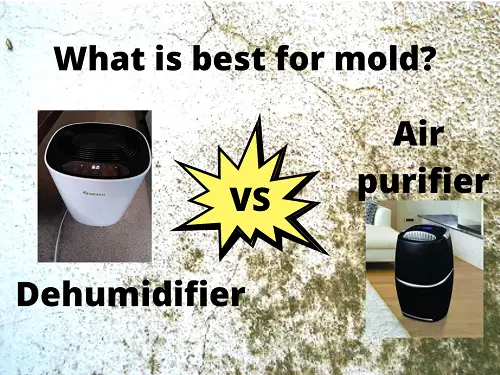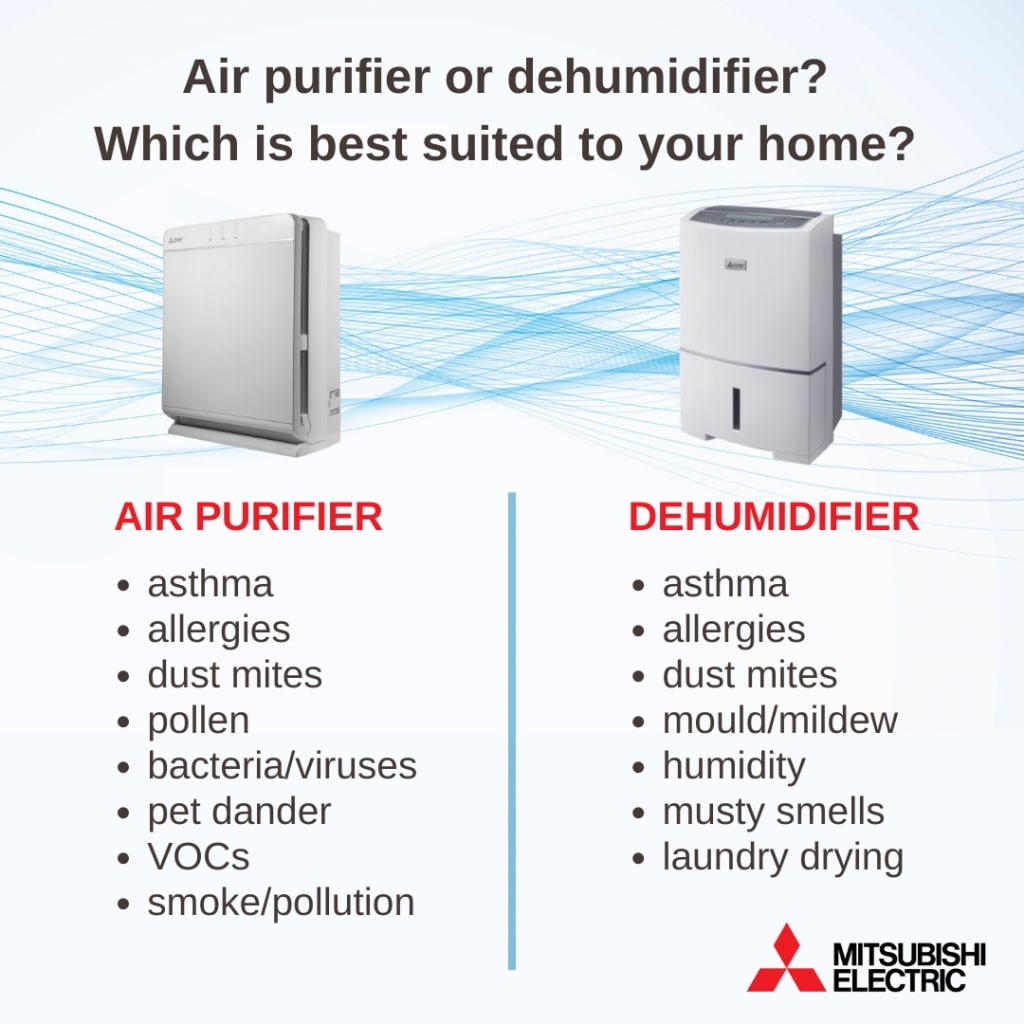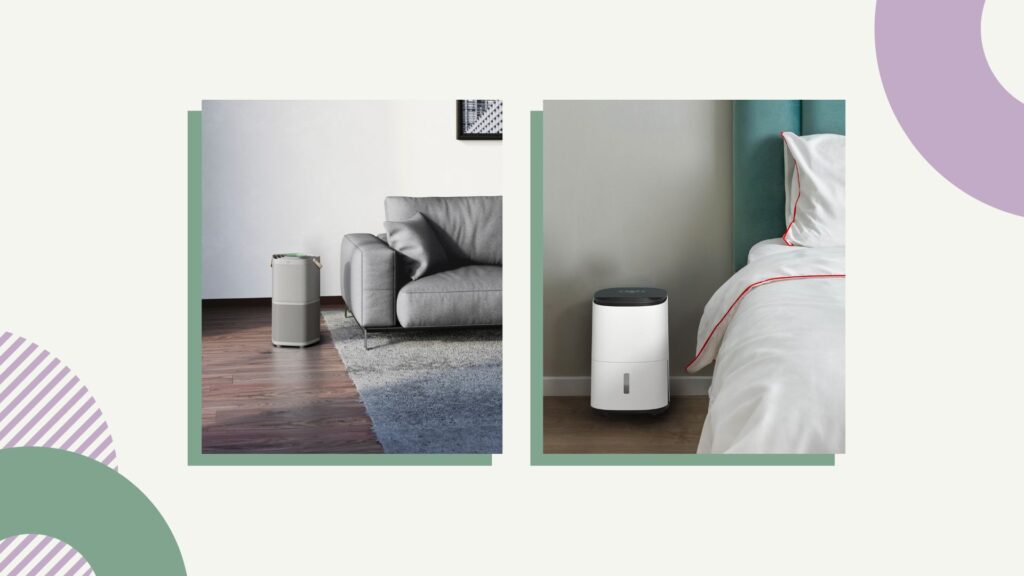Are you concerned about the growth of mold in your home? This article aims to provide you with a clear answer to the question: is a dehumidifier or air purifier better for preventing mold? By exploring the benefits and functionalities of both these devices, you will gain a better understanding of which option is more effective in maintaining a mold-free environment. So, let’s dive into the topic and find the perfect solution for your mold prevention needs.

Benefits of using a dehumidifier
Reduces moisture levels
One of the key benefits of using a dehumidifier is its ability to reduce moisture levels in the air. Excessive moisture in your home can lead to the growth of mold and mildew, which can not only be unsightly but also pose health risks. By removing moisture from the air, a dehumidifier helps to create a more comfortable and healthier living environment.
Creates an inhospitable environment for mold
Mold thrives in environments that have high humidity levels, typically above 60%. By using a dehumidifier to maintain optimal humidity levels, usually between 30% and 50%, you effectively create an inhospitable environment for mold growth. This can help prevent the appearance and spread of mold in your home, protecting both your health and the structural integrity of your property.
Prevents mold growth
By reducing moisture levels in your home, a dehumidifier plays a crucial role in preventing mold growth. Mold spores are present in the air both indoors and outdoors, but they require moisture in order to grow and spread. By controlling humidity with a dehumidifier, you significantly reduce the risk of mold growth, ensuring a healthier and cleaner living environment.
Improves indoor air quality
Excess moisture in the air can lead to the accumulation of allergens such as dust mites, mildew, and mold spores, which can trigger allergies and respiratory problems. A dehumidifier helps to improve indoor air quality by reducing these allergens and providing a healthier living environment. Additionally, a dehumidifier can also help reduce musty odors caused by mold and mildew, leaving your home smelling fresh and clean.
Types of dehumidifiers
Desiccant dehumidifiers
Desiccant dehumidifiers remove moisture from the air using a desiccant material, such as silica gel or activated alumina. These types of dehumidifiers are often used in colder climates or areas with low humidity levels. Desiccant dehumidifiers are typically quieter and more energy-efficient, making them suitable for small spaces or specific applications.
Refrigerant dehumidifiers
Refrigerant dehumidifiers, also known as compressor dehumidifiers, work by cooling the air to condense and remove moisture. They are the most common type of dehumidifiers and are suitable for general use in homes and larger spaces. Refrigerant dehumidifiers are more powerful and effective in extracting moisture from the air, making them ideal for areas with high humidity levels or significant water damage.

Choosing the right dehumidifier
Consider the size of the area
When choosing a dehumidifier, it’s important to consider the size of the area you want to dehumidify. Smaller dehumidifiers are suitable for bedrooms, bathrooms, or small living spaces, while larger dehumidifiers are better for basements, whole-house dehumidification, or larger open areas. Choosing the right size ensures that the dehumidifier can effectively remove moisture from the air without being overworked or inefficient.
Look for energy efficiency
Energy efficiency is an important factor to consider when choosing a dehumidifier, as it will impact your energy consumption and costs. Look for dehumidifiers with an Energy Star certification, which indicates that they meet certain energy efficiency standards. Additionally, consider the dehumidifier’s power consumption and operating modes to find the one that fits your needs while minimizing energy usage.
Check noise levels
Some dehumidifiers can produce noise while operating, which can be a concern, especially if you plan to use it in living areas or bedrooms. Check the noise levels of the dehumidifier before purchasing and look for models that offer quiet operation or include noise-reducing features. This ensures that the dehumidifier won’t disrupt your daily activities or disturb your sleep.
Consider additional features
Different dehumidifiers come with various features that can enhance convenience and functionality. Some desirable features include auto-restart after power outage, digital controls and displays, adjustable humidity settings, timer settings, and built-in hygrometers. Assess your specific needs and preferences to choose a dehumidifier that offers the features that will make it easier and more effective to use.
Benefits of using an air purifier
Filters contaminants from the air
Air purifiers are designed to filter harmful particles and pollutants from the air, including dust, pollen, pet dander, mold spores, and other airborne allergens. By removing these contaminants, air purifiers create a cleaner and healthier indoor environment, reducing the risk of allergies, asthma, and other respiratory issues.
Removes mold spores
One of the significant benefits of using an air purifier is its ability to remove mold spores from the air. Mold spores are tiny, microscopic particles that can become airborne and easily spread throughout your home. By capturing and removing these mold spores, an air purifier helps prevent their growth and the associated health risks.
Reduces allergy symptoms
Air purifiers can be particularly beneficial for individuals suffering from allergies. They effectively capture and remove allergens, such as pollen, dust mites, and pet dander, from the air. By reducing the amount of allergens in your home, air purifiers can help alleviate symptoms like sneezing, coughing, itchy eyes, and congestion.
Improves overall air quality
Using an air purifier can significantly improve the overall quality of the air you breathe indoors. In addition to removing allergens and mold spores, air purifiers can also target harmful substances like VOCs (volatile organic compounds), smoke, and odors. This leads to a fresher, cleaner, and more pleasant-smelling living space.

Types of air purifiers
High-efficiency particulate air (HEPA) purifiers
HEPA purifiers are widely considered the gold standard in air purification. These purifiers use a dense filter made of fiberglass to capture and trap 99.97% of particles as small as 0.3 microns. HEPA purifiers are highly effective at removing allergens, dust, pollen, pet dander, and even some bacteria and viruses from the air.
Activated carbon purifiers
Activated carbon purifiers utilize a porous carbon material that absorbs and traps odors, chemicals, and VOCs. These purifiers excel at removing smoke, cooking odors, pet smells, and other unwanted odors from the air. While activated carbon purifiers may not be as effective in removing particles and allergens, they are excellent for improving overall air freshness.
Ultraviolet germicidal irradiation (UVGI) purifiers
UVGI purifiers use ultraviolet (UV) light to kill or inactivate microorganisms, such as bacteria, viruses, and mold spores, that pass through them. These purifiers can be an excellent addition to your air purification system, as they provide an extra layer of protection against germs and pathogens.
Choosing the right air purifier
Consider the size of the area
Similar to dehumidifiers, it’s crucial to consider the size of the area you want to purify when choosing an air purifier. Air purifiers are rated according to their coverage area, which indicates the maximum space they can effectively clean. Determine the square footage of the area you want to purify and choose an air purifier that matches or slightly exceeds this size for optimal performance.
Check the CADR rating
The Clean Air Delivery Rate (CADR) is a metric that measures the efficiency of an air purifier in removing different types of particles from the air. Look for an air purifier with a high CADR rating for pollen, dust, and smoke, as this indicates its effectiveness in filtering these common airborne pollutants. A higher CADR rating means the purifier can clean the air more quickly and efficiently.
Look for additional filtration features
Different air purifiers come with various filtration features that can enhance their performance and efficiency. Consider additional features like multiple-stage filtration systems, washable pre-filters, antimicrobial treatments, and ionizers. These features can help target specific pollutants and ensure better air purification results.
Consider the noise levels
Just like dehumidifiers, the noise levels produced by air purifiers can vary. If you plan to use the air purifier in a bedroom or a quiet space, look for models that offer low-noise operation or have whisper-quiet settings. This way, you can enjoy the benefits of cleaner air without any disturbance.

Effectiveness against mold
Dehumidifier effectiveness
Dehumidifiers are highly effective in preventing mold growth by reducing humidity levels. By keeping the relative humidity between 30% and 50%, dehumidifiers create an environment that inhibits mold growth. However, dehumidifiers alone may not eliminate existing mold spores or address mold growth in hard-to-reach areas like walls or crawlspaces. If your primary concern is mold prevention, a dehumidifier is a valuable tool.
Air purifier effectiveness
Air purifiers can help remove mold spores from the air, effectively reducing their ability to spread and grow. However, they are not as effective at eliminating mold that is already present on surfaces or hidden within your home. Air purifiers complement the use of dehumidifiers by targeting mold spores in the air, but they should not be relied upon as the sole solution for mold remediation.
The combination of both
The most effective approach to prevent and address mold issues is by using both a dehumidifier and an air purifier together. By controlling the humidity levels with a dehumidifier and capturing mold spores with an air purifier, you create a comprehensive defense against mold growth and improve the overall air quality in your home. This combination ensures that you tackle both existing mold issues and prevent future mold problems from arising.
Cost considerations
Upfront costs
The upfront costs of dehumidifiers and air purifiers can vary depending on the brand, size, features, and quality. Higher-quality models with advanced features generally come at a higher price point. However, it’s essential to consider the long-term benefits and potential cost savings associated with maintaining a healthier living environment.
Maintenance costs
Both dehumidifiers and air purifiers require regular maintenance to ensure optimal performance and longevity. This includes cleaning or replacing filters, emptying water tanks in dehumidifiers, and periodic maintenance checks. Consider the costs of replacement filters or other accessories when assessing the overall cost of owning a dehumidifier or air purifier.
Energy consumption costs
Dehumidifiers and air purifiers consume electricity to operate, so it’s important to consider the associated energy costs. Look for energy-efficient models that have an Energy Star certification or low power consumption. Opting for energy-saving features like adjustable humidity settings and smart sensors can help reduce energy consumption and minimize long-term operating costs.

Additional factors to consider
Frequency of mold issues
If you frequently experience mold issues in your home, investing in a dehumidifier may be more beneficial. However, if mold is not a recurring problem, an air purifier may be sufficient to improve indoor air quality and address other allergens and pollutants.
Existing respiratory conditions or allergies
Consider any existing respiratory conditions or allergies that you or your family members may have. If you or someone in your household suffers from allergies or asthma, an air purifier may be more suitable, as it specifically targets allergens and pollutants that can trigger symptoms.
Indoor air quality concerns
Evaluate your indoor air quality concerns. If you notice persistent odors, residual smoke, or the presence of multiple allergens, an air purifier can help address these specific issues. On the other hand, if your primary concern is excessive moisture and the prevention of mold growth, a dehumidifier should be your priority.
Noise tolerance
Take into account your noise tolerance levels. Dehumidifiers, especially larger models, can produce some level of noise while operating. If noise is a concern, look for dehumidifiers with quiet or whisper-quiet operation features. Air purifiers can also generate noise depending on the model, so consider this when making a decision.
Space availability
Consider the available space in the area where you plan to use the dehumidifier or air purifier. Ensure that you have enough space to accommodate the unit and that it can effectively cover the desired area. Some dehumidifiers and air purifiers are compact and portable, while others require more floor or wall space.
Conclusion
The importance of managing moisture levels
Controlling moisture levels in your home is crucial for maintaining a healthy and comfortable living environment. Excess moisture can lead to mold growth, allergens, and poor indoor air quality. By using a dehumidifier, you can effectively reduce moisture levels and prevent mold issues.
Considerations for choosing between a dehumidifier and an air purifier
When deciding between a dehumidifier and an air purifier, consider your specific needs and concerns. If your main priority is preventing mold growth and managing humidity levels, a dehumidifier should be your focus. If you also want to address other allergens, pollutants, and improve overall air quality, an air purifier is a valuable addition.
The potential benefits of using both together
For the most comprehensive approach to mold prevention and improving indoor air quality, using both a dehumidifier and an air purifier together is highly recommended. By combining these two devices, you can effectively control humidity levels, remove mold spores, and filter out other allergens and pollutants, creating a healthier and cleaner living environment for you and your family.